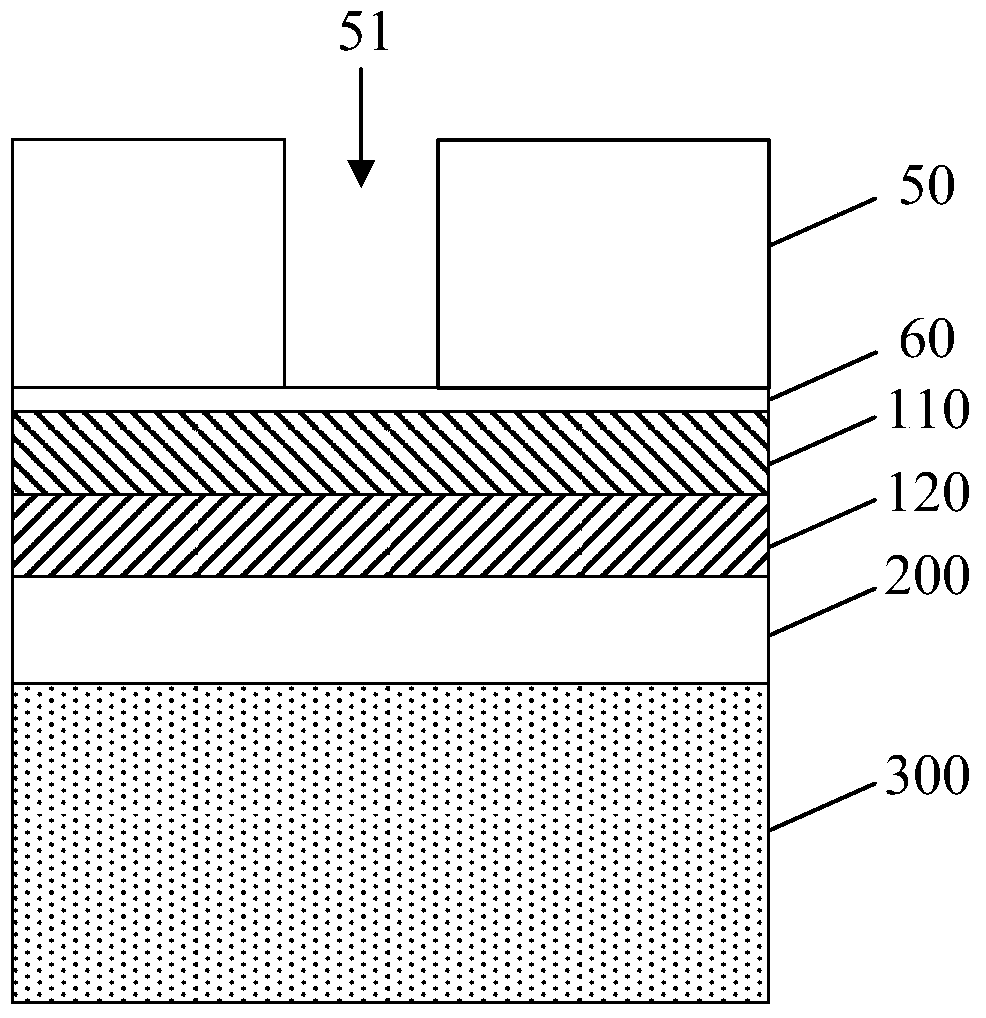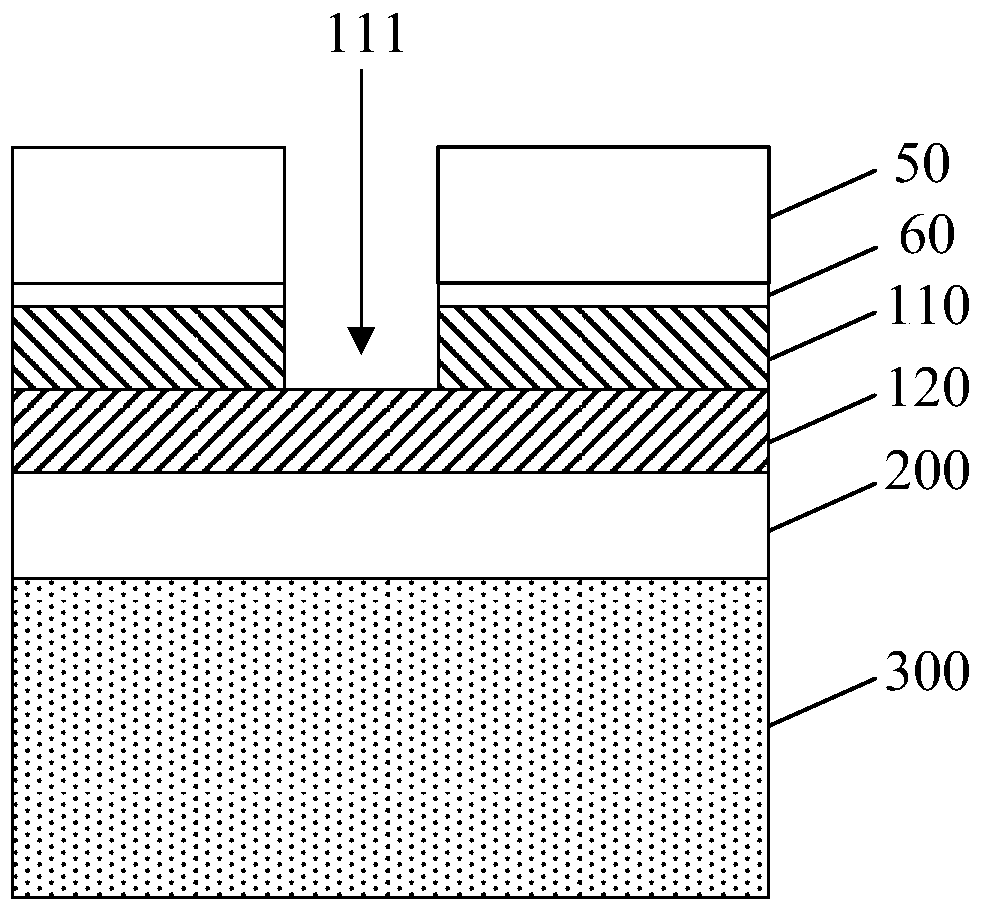Etching method
An etching gas, etching rate technology, applied in electrical components, semiconductor/solid-state device manufacturing, circuits, etc., can solve the difficult pattern of photoresist, pattern deformation, and photoresist cannot provide sufficient etching resistance and other problems to achieve the effect of avoiding inaccurate patterns and reducing the degree of etching
- Summary
- Abstract
- Description
- Claims
- Application Information
AI Technical Summary
Problems solved by technology
Method used
Image
Examples
Embodiment Construction
[0044] In the prior art, in order to better transfer the pattern in the photoresist to the material layer to be etched, a layer of hard mask (hard mask) is added between the photoresist and the material layer to be etched. For the hard mask, the pattern in the photoresist is first transferred to the hard mask, and then the remaining hard mask is used as an etching mask to transfer the pattern to the etched material layer.
[0045] However, since the prior art needs to form a thinner photoresist (ultra thin PR), it cannot block the etching well, resulting in deformation of the pattern transferred into the hard mask, so that the pattern cannot be transferred well. Into the etched material layer, which in turn affects the topography of the pattern formed by etching.
[0046] Therefore, the present invention provides an etching method, comprising: providing a substrate; forming an etching material layer on the substrate; forming a hard mask on the etching material layer, and the h...
PUM
 Login to View More
Login to View More Abstract
Description
Claims
Application Information
 Login to View More
Login to View More - R&D
- Intellectual Property
- Life Sciences
- Materials
- Tech Scout
- Unparalleled Data Quality
- Higher Quality Content
- 60% Fewer Hallucinations
Browse by: Latest US Patents, China's latest patents, Technical Efficacy Thesaurus, Application Domain, Technology Topic, Popular Technical Reports.
© 2025 PatSnap. All rights reserved.Legal|Privacy policy|Modern Slavery Act Transparency Statement|Sitemap|About US| Contact US: help@patsnap.com



